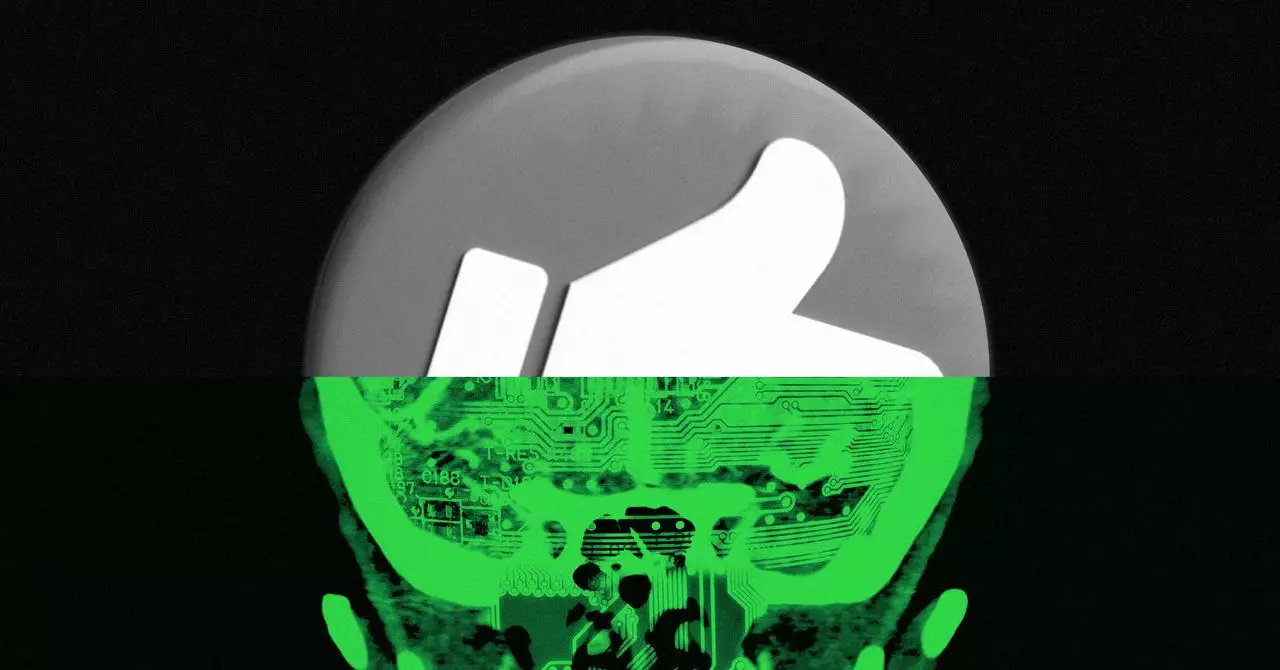In an era dominated by artificial intelligence, the traditional concept of the “like” button is undergoing significant scrutiny. The like button, which has long served as a straightforward metric for user interest and engagement, may soon face a paradigm shift, due in large part to its potential role in enhancing AI systems. Max Levchin, the co-founder of PayPal and CEO of Affirm, boldly asserts that the vast trove of likes accumulated by social media platforms could serve as a treasure trove for AI training. This brings about interesting questions: can the like button evolve into a tool that not only simplifies user interaction but also shapes the very algorithms that govern content delivery?
The Dilemma of Machine Learning
AI development, particularly in the realm of reinforcement learning, often illustrates a fundamental conflict: algorithms trained purely on their defined reward structure may yield results at odds with human intuitions and values. The practice of reinforcement learning from human feedback (RLHF) aims to bridge this gap, introducing a layer of human judgment into machine decision-making processes. However, challenges arise when considering the depth and quality of feedback required for meaningful development. The cost of gathering sufficient human annotations can be substantial, raising the stakes for tech companies eager to produce human-like AI. Levchin proposes that this challenge could be met through the extensive data represented by the likes shared on platforms like Facebook.
Imagine harnessing the myriad influences of human preference encapsulated within these likes to create a more intuitive AI. According to Levchin, the like button embodies a goldmine of preference data, poised to revolutionize AI training methodologies. The question remains: will social media companies adapt the role of the like button to leverage this data more efficiently, or will technology find more direct ways to gauge user preferences and understand behavior?
Changing Landscape of User Preferences
Interestingly, while we ponder the future of the like button as a tool for AI training, AI is simultaneously reshaping how we understand user preferences. Social media platforms are already utilizing advanced algorithms to predict user likes, often rendering the button itself redundant. This creates a fascinating duality: the like button could become less about user expression and more about data collection for training AI, which then predicts user behavior.
An illustrative case occurred in early 2024 when Facebook tested AI enhancements on its algorithms for recommending Reels videos. AI facilitated a more efficient weighting of engagement variables, leading to increased viewing times—a clear triumph for the platform’s goal of higher user engagement. This instance epitomizes the shift toward a future where machines might know our preferences better than we do, stirring a conversation around whether a traditional interface like the like button is even necessary.
A Dual Role for the Like Button?
While some experts, including YouTube co-founder Steve Chen, speculate that the like button might eventually become obsolete, he raises a critical point about its lasting relevance in specific contexts. The button allows users to adaptively express their preferences, especially during significant life shifts or momentary needs. For instance, on days when a user might be inclined to seek family-centric content, the like button grants them a straightforward means to communicate that desire to the platform’s algorithms.
Furthermore, the like button is essential for a crucial third party: advertisers. It acts as a slender bridge connecting viewers, creators, and advertisers, allowing content platforms to gauge interest levels effectively. Each tap signifies not only a user’s appreciation for content but also serves as vital evidence of engagement for advertisers trying to target their demographic more accurately.
In a futuristic landscape dominated by AI, we may find ourselves navigating an environment where the effectiveness of AI-driven recommendations raises concerns about authenticity and emotional connection in content consumption. If the like button remains integral, its function may shift towards a more nuanced role where it supplements AI predictions rather than existing as a primary engagement metric.
The Complex Interplay of Human and AI Decision-Making
The discourse surrounding the like button encapsulates the intricate interplay between human judgment and algorithmic efficiency. At its core, this conversation highlights the need for humanity within technology. While AI holds the promise of unprecedented predictive accuracy, the nuances of human choice and the need for meaningful emotional engagement should never be lost in the shuffle of data. As we redefine the parameters of interaction, the essence of the like button could evolve, suggesting that perhaps it will serve as a reminder of our human instincts amongst the advanced capabilities of artificial intelligence.
In this transition, finding balance becomes crucial. The value of the like button as a tool for AI training hinges on its ability to simultaneously empower users while yielding actionable insights. As we shape the future of content engagement through the lens of AI, it becomes imperative to preserve avenues for authentic expression and foster deeper connections that resonate outside of mere algorithms.

